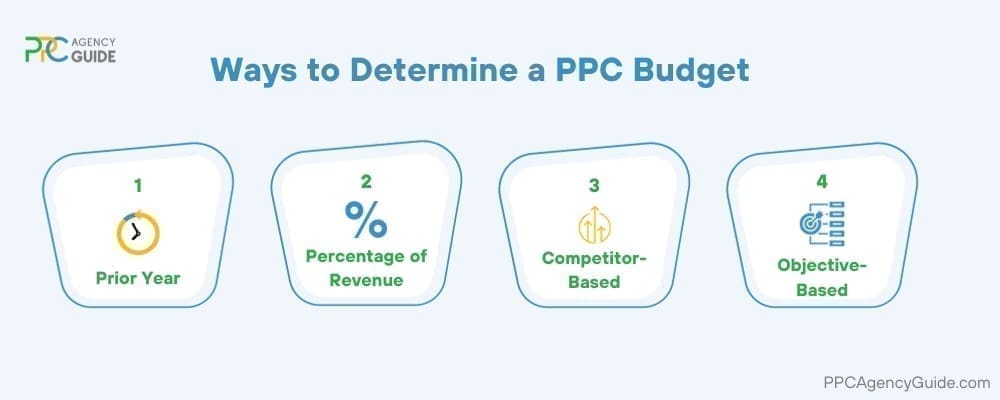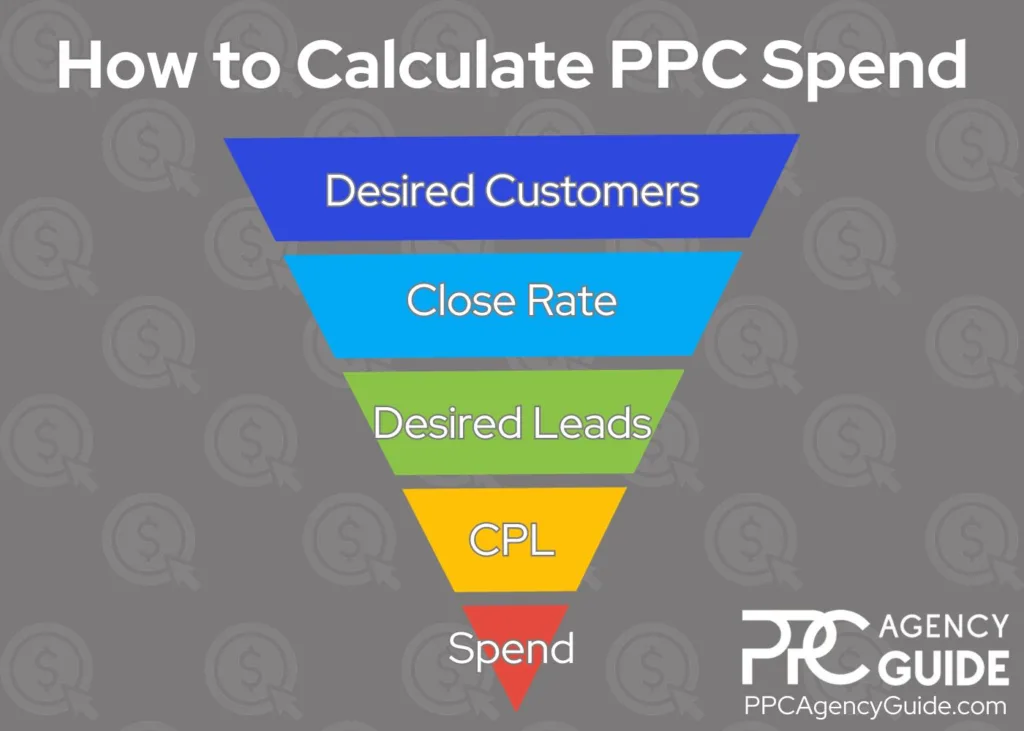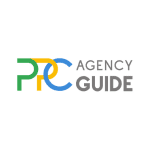
Many people start by asking, “How much does Google PPC cost?” The answer is: “Whatever you’re willing to pay.” That’s because PPC, and most things in digital marketing for that matter, don’t really have ceilings. There’s almost always something more you can do to improve your results or generate sales.
“How much should I spend on PPC?” is a better question. Although there still isn’t a universal answer, it’s possible to work backward, starting with your goals to determine how much to spend on PPC. We’ll walk you through the formulas for various goals, plus give you some quick tips for benchmarking your PPC spend below.
Factors That Impact How Much to Spend on PPC
You may hear general advice suggesting you should spend five percent of your revenue on paid advertising or that small businesses should spend $10,000 monthly. Neither of these things is entirely accurate because every brand is different. Moreover, many factors determine what PPC costs. Let’s take a quick look.
Management Costs
Your total PPC advertising cost is comprised of the actual advertising spend (total PPC cost for Google, Microsoft, Amazon, Facebook, etc.) and PPC management or administrative expenses. Management costs are usually somewhere between 10 and 30 percent of whatever you’re paying to your ad platform. For example, if you pay $10 to the Google Ads platform, expect to accrue another $1 to $3 in additional costs to set up and maintain those ads. PPC management costs include things like:
- Strategy
- Audience Research
- Ad Copywriting
- Graphic Design/ Video Creation
- Landing Page Creation
- Workflow Creation
- Technical Setup
- Ongoing Maintenance
Geography
The location of your business and target area can also impact PPC costs. Local businesses tend to be more vulnerable to cost differences.
Industry and Competition
The value of a new lead or customer varies by industry. For instance, a retail chain that picks up a new customer through an ad may earn $1,000 over the duration of their relationship, but an attorney could easily get $10,000, $100,000, or more from a client. Brands that do their homework and know the actual value of a new customer are willing to pay more for clicks, so they drive up the price with higher bids.
PPC Channels/ Platforms
The ad platforms you work with influence cost dramatically. The average Google Search cost per click (CPC) is $4.22, for example, while a Microsoft click only sets brands back $1.54 on average, as noted in our PPC benchmark report. That’s not to say you should use the cheapest platform. It’s essential to focus on whichever platforms allow you to reach your audience, or you’ll wind up paying for clicks from people who will never become customers.
Ad Types/ Formats
Search ads are only one form of PPC ad. Again, the average CPC on Google is $4.22. However, if you run display ads on the same network, a click is only $0.63. A click on a YouTube video ad may be even cheaper, with most coming in at $0.50 or less. Social media ads are all different, too. Like platforms, you can’t always go with what’s cheapest. It’s essential to run the types of ads your audience responds to.
Dates and Times
If you run ads during periods with lots of competition, your costs will naturally be higher. For example, brands that run shopping ads on Black Friday will pay more because everyone is fighting for customers that day.
Ad Quality
Ad platforms don’t just look at bids when determining which ad to display. Your ad quality score, a metric that essentially rates the user experience you provide, is a factor, too. You can often win auctions even if your bid is lower than competitors by having a higher score.
Goals

Brands run paid ads for lots of different reasons. Let’s say that you’re running search ads for an accounting firm. You might set up a campaign that targets people in your city who search for general accounting phrases or important tax filing dates and tips. That will help ensure people see your company’s name, but those people won’t likely become clients anytime soon, so your budget will be much lower. Conversely, you might set up a campaign for people ready to sign up for services. So, you’ll target people searching for phrases like “[City Name] Accountant.” You should be willing to pay more for these clicks.
Number of Customers/ Revenue Targets
Do you want 100 new customers or 1,000? Does your campaign need to give you $10,000 in revenue or $100,000? You’ll need to invest more to generate greater results.
Your Previous Results
Unless you change something up, history will likely repeat itself. If your brand has historically exceeded industry benchmarks with a very low CPC or cost per lead (CPL), you should be able to continue getting those results going forward. Equally, if you aren’t leveraging an effective PPC strategy or optimizing your campaigns well, and your CPC and CPL are higher than normal, you’ll pay more for your ads until you address the underlying problems.
Ways to Determine a PPC Budget
Now that we’ve covered what impacts your PPC cost let’s look at different ways brands set their PPC budgets.
Prior Year
If you’ve previously run PPC campaigns and were happy with the results, you can run with the same budget or increase it to correspond with your desired volume this year.
Percentage of Revenue
Brands typically allocate around nine percent of their revenue to marketing, Gartner reports. There are variances by industry, of course. B2B product industries, for example, allocate 7.8 percent of their revenue to marketing, while their B2C counterparts allocate over 15 percent, according to HubSpot. Services tend to be slightly lower, with B2B coming in at 5.9 percent and B2C at 6.5 percent.
It’s ultimately still up to you how to slice the marketing budget based on the best ways to reach your audience if you use that as a starting point. Or, you may wish to simplify and set your PPC budget somewhere between two and five percent of your total revenue.
Competitor-Based
There are paid PPC tools that can show you exactly what your competitors are spending on ads. Outside of investing in more tools, you can also try to match them if you can ballpark their digital marketing spend. More than half of all budgets go toward paid channels, according to a Gartner CMO survey.
Objective-Based
A final way to determine how much to spend on PPC is to work backward, starting with your objective. If you know what you want to achieve, it’s relatively easy to calculate what reaching your goal will cost. This is the method we’ll cover below.
If you’re unsure about your PPC strategy or need expert help setting a budget that aligns with your goals, consider working with professionals. Check out our PPC Agencies in the U.S. page, and we’ll help you find the right agency for your needs.

How to Calculate Your PPC Advertising Cost & Determine Your Budget
Working backward and starting with your objective puts you in a different frame of mind. You’ll not only understand how much to spend on PPC but also the value you’re receiving from your ad spend.
Step 1: Calculate Your CLV (Optional)
Customer lifetime value (CLV) refers to the total amount you’ll earn from a customer over the lifetime of your relationship. Although you don’t necessarily need to calculate your CLV before you begin, it’s a helpful step that helps put your expenses into perspective.
To do this, you’ll simply multiply the average length of your customer relationship in months or years by the average purchase volume per cycle. Because happy customers refer others, and this is part of the lifetime value of a customer, you’ll also need to multiply your figure by the average number of referrals each customer brings you. The formula looks like this:
CLV = Relationship Term x Purchase Volume x Referrals
Step 2: Identify and Quantify Your Goal
Create a PPC SMART goal. Build it around clicks, leads, new customers, or sales volume. For instance, you may want to focus on clicks if you’re trying to boost brand awareness. A SMART goal might be “I want 100,000 clicks via Google Search ads in three months.”
Step 3: Gather Benchmarks or Historical Data
Next, you’ll need to gather relevant data related to your metrics, such as CPC or CPL, for the channel or platform and ad type you intend to use. If you’re focusing more on the end result and want a certain number of new customers, you’ll also need to know your final conversion rate. If you’re focused on sales, you’ll need your average purchase amount. This one can be a little trickier if you have repeat customers, so consider the timeframe here, too.
Use industry benchmarks if you don’t have historical data from your business.
Step 4: Work Backwards to Calculate PPC Spend
Next, we’ll work backward, starting with our goal, and calculate what it will cost to reach it.
For the sake of simplicity, we’ll use Google Search benchmarks on all our examples. This exercise assumes that:
- The PPC budget is for a fictional document destruction company called Bulk Shred.
- Bulk Shred is categorized as a business services company and will use industry benchmarks for its calculations, so CPC is $5.47 and CPL is $83.86.
- The company generates an average of $500 per month ($6,000 annually) per client.
- All leads go through a sales team, and the sales team closes 30 percent of deals.
Example: Clicks
- Goal: Bulk Shred wants 10,000 clicks on its search ads.
- Formula: Desired Clicks x CPC = PPC Spend
- Calculation: 10,000 x $5.47 = $54,700
Example: Leads
- Goal: Bulk Shred wants 1,000 leads from its search ads.
- Formula: Desired Leads x CPL = PPC Spend
- Calculation: 1,000 x $83.86 = $83,860
Example: New Customers

- Goal: Bulk Shred wants 100 new customers from its search ads.
Before determining cost, we must calculate how many leads the sales team needs to close deals on 100 customers. - Formula Step 1: Desired Customers (100 / Closing Rate) = Desired Leads
- Formula Step 2: Desired Leads x CPL = PPC Spend
- Calculation Step 1: 100 (100 / 30) = 333.33
We’re rounding up because you can’t have one-third of a lead. - Calculation Step 2: 334 x $83.86 = $28,009.24
Example: Sales
- Goal: Bulk Shred wants to grow annual sales by $500,000 through search ads.
- Formula Step 1: Sales Goal / Customer Value = Desired Customers
- Formula Step 2: Desired Customers (100 / Closing Rate) = Desired Leads
- Formula Step 3: Desired Leads x CPL = PPC Spend
- Calculation Step 1: $500,000 / $6,000 = 83.33
We’re rounding up because you can’t have one-third of a customer.
- Calculation Step 2: 84 (100 / 30) = 280
- Formula Step 3: 280 x $83.86 = $23,480.80
Step 5: Divide by Campaign Length (Optional)
If you’re trying to establish monthly budgets on your chosen platform, simply divide your total spend by the length of time. In this case, Bulk Shred wants to run its full campaign over three months, so we’ll divide our last PPC spend by three.
- Formula: PPC Spend / Duration = Budget
- Calculation: $23,480.80 / 3 = $7,826.93
We can see Bulk Shred will need to set a monthly PPC budget of $7,826.93 to reach its goal.
Step 6: Add PPC Management Costs
As discussed earlier, there are costs involved in setting up and maintaining your ads in addition to the CPC fees you pay the ad platform. These are usually between ten and 30 percent of your ad spend.
In our last example, Bulk Shred had an ad spend of $23,480.80. We’ll assume they’re spending 20 percent to set up and maintain their ads, so their management cost is $4696.16.
- Formula: PPC Spend + Management Costs = Total PPC Cost
- Calculation: $23,480.80 + $4696.16 = $28,176.96
Step 7: Review and Adjust Goals as Needed
In our example, Bulk Shred generates $500,000 in sales from a $28,000 investment. Even if 80 percent of the money earned goes to things like payroll and operating expenses, the company is still getting over 200 percent ROI from its ads.
Your figures will be different. It’s essential to understand your business and PPC numbers going into it so it’s easy to see if an investment is wise or if your budget should be shifted toward a different platform or type of ad.
Furthermore, results won’t likely come overnight. You may need to spread out your investment over a longer period of time to reach your goals. You’ll also need to monitor your campaigns closely to ensure they perform as expected.
Get Help Running Effective PPC Campaigns
Our examples here leveraged industry averages. That means some businesses perform much better, and some don’t turn a profit at all. Always have an expert managing your PPC ads to ensure you get top ROI. If you’d like to work with a professional PPC management team that can help you reach your goals and maximize your PPC budget, request a complimentary consultation.


















